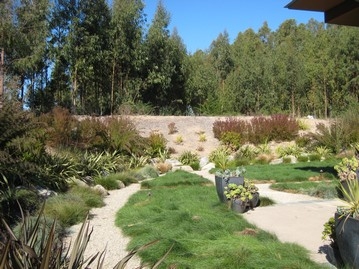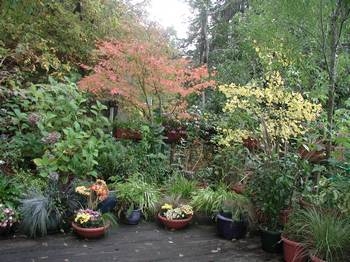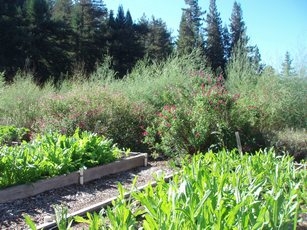Electric orange trees decorate our gardens and forest paths this time of year. During the summer when trees are quietly green we almost forget they are among us but then seemingly overnight they turn on the lights and glow with flamboyant fall colors. Thanksgiving is that time of year when we are reminded of all that we have to be grateful for. The world is so beautiful and we’re lucky to live in such an amazing place. Here are some things for which I’m thankful.
1. Food
It’s the most important thing we share. We eat to celebrate when we’re happy. When we’re sad, we eat to comfort ourselves. We eat for fun and the greatest thing you can do for someone else is cook a meal for them. Simple delicious food is a gift. I could never do without sharing a meal with friends or family.
2. Nature
Our sense of sight allows us to see the colors of life- an orange sunset to end the day, a rainbow after a storm, new green leaves emerging in the spring, clouds and blue skies. Smell the air after it rains or the fragrance of a flower. Touch the softness of a velvety leaf
3. Gardens
Big or small, in a pot or an orchard, growing something is a way to say you believe in tomorrow. Being able to pick a Sungold tomato off your own vine or a bouquet of flowers for your dinner table is a reward well earned. A cool spring, a heat wave in July, raccoons digging up your new seedlings, nothing can deter a gardener. Hope springs eternal each year as we plan for next years garden now evan before winter has started.
4. Lovable pets
Whether you have one or get to enjoy someone else’s you know the joy and love you receive from being around these amazing creatures. There’s nothing like that greeting from a pet when you come home. It can make your day or erase a bad one. They bring us so much happiness and ask for very little in return. Just petting their soft fur can help us cope when we’re sad.
5. State Parks, National Parks and Monuments, County Parks
This year I was able to visit The Pinnacles National Monument, Lassen Volcanic National park, Ano Nuevo, Candlestick Point, Bean Hollow, Pogonip, Wilder, Natural Bridges, Moss Landing, Marina and Pt. Lobos as well as our local Big Basin, Fall Creek and Henry Cowell state parks. Being a native Californian I’ve been to the far corners of our state over the years. I remember as a kid camping with my parents and thinking that every state had as many cool places as ours. Located on mountaintops, on the pristine shores of sparking lakes, alongside rivers, take advantage of these special places preserved because they are unique.
6. Blessings
Count your blessings. Be grateful for friends who understand. Appreciate what you have. See the beauty around you. Live in the moment. On Thanksgiving we have a chance to gather and appreciate the friends, family and the blessings around us. Imagine if everyday you took a moment to be th

 Held at the University of California Cooperative Extension office in Watsonville and open to the public, the meeting lived up the the Master Gardener slogan to "Cultivate Knowledge... by extending research-based horticultural information". The speaker was Cliff Low, owner of Perry Laboratory in Watsonville. If you have ever wondered why your hedge is languishing despite your exquisite care you may need his services.
Held at the University of California Cooperative Extension office in Watsonville and open to the public, the meeting lived up the the Master Gardener slogan to "Cultivate Knowledge... by extending research-based horticultural information". The speaker was Cliff Low, owner of Perry Laboratory in Watsonville. If you have ever wondered why your hedge is languishing despite your exquisite care you may need his services. Bright trees and shrubs add color flashes to fall gardens. Sasanqua camellias have already started blooming and will continue to flower throughout the winter. In addition to asters and rudbeckia, Japanese anemones are the stars of the border at this time of year. The electric blue flowers of dwarf plumbago contrast with reddish leaves as night temperatures dip. Summer Snowflake viburnum, Encore azalea, Endless Summer hydrangea and loropetalum are blooming now, too.
Bright trees and shrubs add color flashes to fall gardens. Sasanqua camellias have already started blooming and will continue to flower throughout the winter. In addition to asters and rudbeckia, Japanese anemones are the stars of the border at this time of year. The electric blue flowers of dwarf plumbago contrast with reddish leaves as night temperatures dip. Summer Snowflake viburnum, Encore azalea, Endless Summer hydrangea and loropetalum are blooming now, too.  Linda Butler starts all her vegetables from seed, and grows year-round. Some are started directly in the beds while others are started in flats and transplanted later. Cole crops, such as broccoli, cauliflower and cabbage, would get eaten by bugs and birds would eat them as fast as they germinated so these are started in flats.
Linda Butler starts all her vegetables from seed, and grows year-round. Some are started directly in the beds while others are started in flats and transplanted later. Cole crops, such as broccoli, cauliflower and cabbage, would get eaten by bugs and birds would eat them as fast as they germinated so these are started in flats.